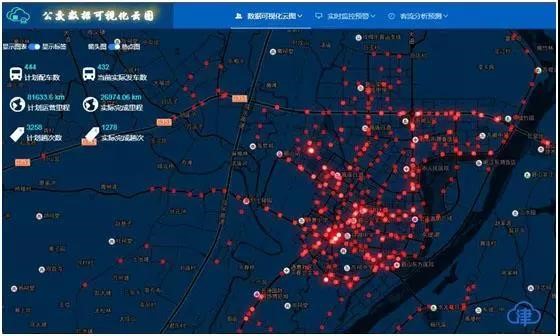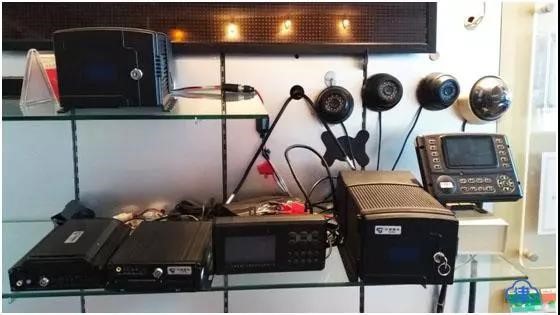As usual, 7:30 in the morning is the busiest time in a city. With the rapid development of artificial intelligence technology, Yang Xiao’s “painful memory” of a few years ago has faded, when he was running after the bus to avoid being late for work and when he was waiting for a bus in the cold wind. Today, Yang Xiao takes out his mobile phone at the bus stop not far from home, and then he opens the Chinese real time public transportation APP "车来了(Bus Coming)" and chooses the Bus No. 1 that he takes every day. The phone shows that the nearest bus is 2 minutes away from the stop. Yang Xiao does some mental calculation: to ensure that he won’t be late for work, plus the time spent on waiting for the bus and the time on the road, there are still about 10 minutes to buy breakfast at a convenience store near his company. Yang Xiao has become accustomed to such a "daily routine".
It is since the wide application of the intelligent bus dispatching system in many cities in China, its technical application has been extended to the small APP on the mobile terminal. With just one simple click on the screen of a mobile phone, waiting for a bus is a thing of the past.

Intelligent bus dispatching system realizes data visualization
“The bus is one of the main forces in the public transport system. However, the impact on traffic of various factors like weather changes, morning and evening rush hours, and unexpected events throughout the year is changing constantly. “With artificial intelligence science and technology, we need to realize scientific dispatching under limited bus capacity to meet the needs of passengers as much as possible,” said Tao Wenyuan, Deputy Director of the College of Intelligence and Computing at Tianjin University who is the technical leader of the intelligent public transport project. He explained that their research utilizes data mining and digital learning technology to install a smart "brain" on buses - the bus intelligent dispatching system (BIDS), that is, the number of buses is designed to adjust to the flow of passengers, and it is very timely, so passengers don't have to wait for a long time.
“Public transport system is different from taxis and private cars. It is not designed to serve an individual, but a group of passengers. Group consumption habits and group traveling characteristics require a large amount of data for analysis. The difference between this amount of data and individual traveling characteristics is an order of magnitude. After collecting massive data, we must develop algorithms for the self-development and deep learning of data. We will establish models for various situations such as peak traffic jams, vehicle breakdowns, and departure schedule adjustments in advance, and predict the traveling needs of citizens.” Tao Wenyuan said.

Researchers continue to optimize the bus "brains"
To make buses smart, the College of Intelligence and Computing at Tianjin University and the TCPS Company jointly established the Tianjin Intelligent Public Transportation Onboard Equipment Engineering Center and developed the public transportation intelligent dispatch system through industry-university-research cooperation.
Jin Zhan from the TCPS Company explained that the construction of the intelligent public transportation system is mainly divided into three steps: data collection, establishing a data center for public transportation, and the smart self-dispatching of the public transportation. Only by establishing a smart neural network extending in all directions for the public transportation system, can the "brain" command each terminal to operate flexibly and accurately.
In the public transportation data information collection, technicians installed a "mysterious small black box" on vehicles - a series of intelligent onboard equipment and sensors to collect massive data. Data like vehicle positioning, passenger flow, one-way running time, driving route, arriving punctuality rate and consumption mode are stored in the “small black box” in real time and uploaded to the bus stop dispatching center to which the vehicle belongs.
"These small black boxes actually are not mysterious. We can see it on the bus, such as cameras and swipe machines. Swipe machines can collect data including passengers' consumption, how much money they spent, using Alipay or one-card-pass, etc. The camera can collect information of the vehicles’ driving and passengers and so on. Jin Zhan explained to journalists that each bus generates about 1G of data a day, and about 100G of data can be collected every day.

The small black boxes that collect data on buses
The massive data will not only be sent to the dispatching center but also the public transportation data center in the Tianjin Supercomputing Center founded by the TCPS Company. If the entire intelligent dispatching system is compared to the "brain" of the bus, then the data center is the "memory area" in the brain where all the data is processed for storage and analysis.
Last, the key step in making the bus smart is to let buses learn to self-dispatch. On the basis of the vast collection of data, technicians have turned digital data into an optimal solution for flexible transportation by establishing a digital model. For example, automatically generating and adjusting the departure schedule, driving route, stop settings, etc., to provide a better reference for dispatchers.
Buses have become so smart, and yet researchers have a bigger vision. Jin Zhan told journalists that with the rapid development of driverless technology, buses are likely to be the first for unmanned vehicle test. "At present, we are still relying on artificial intelligence technology. In the future, our goal is to remove the word 'artificial' and realize the complete intelligentization of bus dispatching, that is, unmanned driving, and unmanned and personalized dispatching, and eventually realizing the seamless connection between the starting point and the destination to provide a more convenient and fast traveling experience for passengers."
By: Li Qin
Editors: Sun Xiaofang and Keith Harrington






